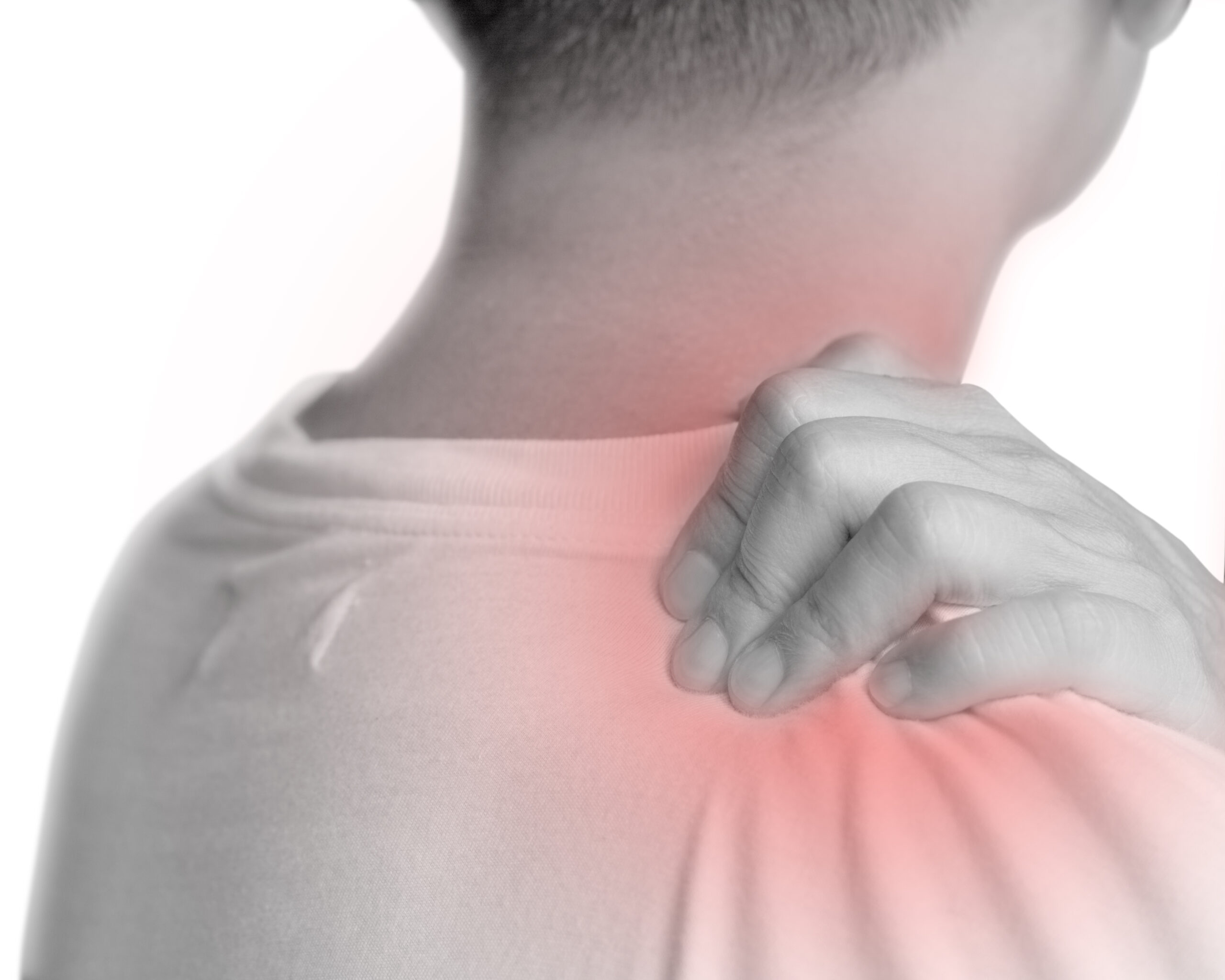Shoulder injuries are one of the most common injuries we treat, ranging from rotator cuff injuries to more complex neurological conditions. One such condition we treat is known as Thoracic Outlet Syndrome (TOS).
TOS can present in multiple ways as there are multiple structures in the shoulder that can be affected, which is why it can be a difficult condition to identify and treat. It occurs in approximately 9% of the population with a higher chance in females (3-4 times higher) than males, and will typically occur between the ages of 20 – 50 years old.
Symptoms of TOS
Patients with TOS can report symptoms anywhere between the face & base of the skull, neck, chest, shoulder, and upper back. Patients can also report numbness, weakness, fatigue, or a sensation of heaviness through the arm and hand. Usually, these symptoms worsen with overhead activities such as throwing, painting overhead, or swimming. Slouched posture while typing can also increase a patient’s symptoms depending on how long they spend in front of a screen.
TOS occurs when there is compression of neurovascular structures as they exit of the thoracic outlet, which is made up of the muscles in the front of the neck (anterior and middle scalene muscles) and the first rib. Compression through this area can be caused by a couple of different things including tight muscles, poor posture, clavicle or rib fractures, or in some cases people will have an extra rib (cervical rib) that takes up space!
We will typically see either the nerves in the brachial plexus (95% of the time) or the artery and/or vein get compressed (the other 5% of the time). As I said earlier, depending on which structure is getting compressed we can see a few different things happen.
Depending on which part of the brachial plexus is compressed the patient can report pain, numbness, and tingling through the side of the neck, ear, shoulder and upper back when the upper plexus is affected or through the back of the shoulder to the ring and pinky finger then the lower plexus is compressed.
If the subclavian artery is compressed a patient can report symptoms beginning randomly, numbness & tingling through the arm and hand decreased blood flow to the hand, and sensitivity too cold to name a few.
If the subclavian vein is compressed then a patient may report the arm feels heavy, experience numbness and tingling through the arm, and even experience some swelling. There are special types of diagnostic imaging (ultrasounds, radiology) that can help make the diagnosis when used with our physical examination and testing but ultimately TOS is diagnosed by ruling out other conditions that can cause similar symptoms in patients.
Treatment for TOS
When it comes to treatment, physiotherapy is the first option. We begin by educating the patient on what is going on and what aggravated their symptoms and how to avoid those situations. Next, we begin an exercise program that focuses on strengthening the postural muscles to open the chest and take away some compression.
We also focus on exercises that strengthen the muscles that stabilize the shoulder blade and help it move normally. These muscles include the upper fibre trapezius, rhomboids, and serratus anterior to name a few. Strengthening the rotator cuff is also an important part of the exercise routine.
Treatment would also focus on releasing the muscles that cause compression of the thoracic outlet, which would include the scalenes and the pectoralis muscles. Techniques to help improve the movement of the neck and upper back vertebrae, as well as the first rib, would also be used. If physiotherapy wasn’t was not helping then surgical options to widen the thoracic outlet would be considered in an attempt to offload the compressed structures.





